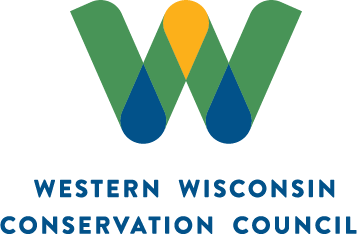By Mary Hookham for WWCC
The Western Wisconsin Conservation Council is growing by leaps and bounds as it works to protect the Kinnickinnic, Rush and Willow river watersheds. Conservation practices like reduced tillage and the use of cover crops are on the rise along with the number of members stepping up to try new practices on their farms.
“There has been a great increase in members and in practices used over the last three years. This group is reducing negative impacts on surface waters and that is great,” Steve Richter, agricultural strategies director with The Nature Conservancy, said Dec. 10 during the council’s annual meeting, held virtually.
Richter reported 23 of the farmer-led watershed conservation group’s 48 members are planting cover crops and seeing the benefits on their farms. Members have planted more than 10,000 acres of cover crops. Seventeen members are using reduced tillage while another 17 are practicing no-till, bringing conservation tillage acres to about 20,000 this year. In all, 35 members implemented a nutrient management plan during 2020 on their farm.
Richter said members are seeing a 60-to-70 percent runoff reduction because of their conservation practices. The most common crop rotations among members are corn silage, corn silage with alfalfa, continuous corn and corn-soybeans. Members are seeing the benefits of cover crops, reduced tillage, no-till and low-disturbance manure injection.
“Phosphorus staying in the soil is really, really key,” Richter said. “When you improve soil health, you have all sorts of wonderful benefits that come with that improvement.”
The group also received two grants in 2020, WWCC President Todd Doornink, a dairy farmer, said. One came from the state Department of Agriculture, Trade and Consumer Protection while the other came from The Nature Conservancy. The grants help fund field days and the group’s cost-share programs. Twenty-three members were awarded funds this year, an increase of seven members from 2019.
“We are feeling urban encroachment on our watersheds, so we’re trying to educate people about what farmers are doing in order to maximize water quality and soil health,” Doornink said.
Plans for the new year include a nutrient management workshop, spring no-till cost-share program and summer field day and research update, he said.
As a result of the COVID-19 pandemic, well water testing came to a near halt. Group members plan to get back to testing in 2021.
The group is increasing its presence online, which helps spread the word about conservation agriculture. WWCC had a news media reach of about 330,000 people throughout the year and its Facebook page grew exponentially.
“Farmers are the greatest conservationists we have,” Doornink said. “We are starting to document the constant improvement our members are going through.”
